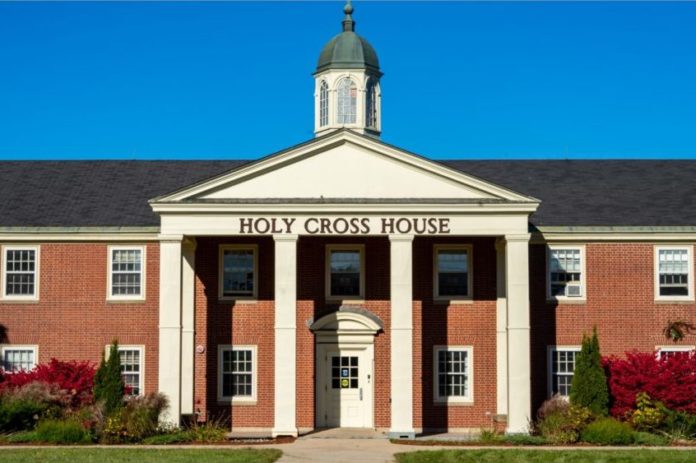

Correction and clarification: A previous version of this article stated Vanier Hall is a gender-neutral residence. In fact, Vanier Hall is a mixed-gender residence with only one gender-neutral wing. The Aquinian would also like to clarify a statement by Nicole Durón to say gender-specific residences offer safety from cisgender men. We regret the error.
For first-year St. Thomas University student Tynne Zeijdel, the idea of having gendered residence buildings feels “incredibly outdated.”
“I don’t think that we should have to continue sectioning people off by their sex,” said Zeijdel.
In January 2021, STU announced Vanier Hall would become a mixed-gender residence, while Holy Cross House would serve as the all-female residence.
Zeijdel is transgender and said it is essential to make accommodations on campus for the comfort of students who don’t identify with traditional gender ideals. But Zeijdel also recognizes that students might not feel comfortable with mixed-gender spaces.
“Just as much as we need to have spaces for people who are genderqueer, we need to have spaces for people who may not be comfortable with living with masculine presences,” said Zeijdel.
Living in a gender-specific residence may not be the first choice for some, but for students like Nicole Durón, it is comforting.
“I chose Holy Cross because it was a female-only residence,” said Durón. “Because of my Catholic background and [because] my parents want me living in a female-only residence. It gives me comfort.”
Durón said the concept of gendered residence buildings is not outdated and feels there should not be a problem with female-only dorms as they can offer women safety from cisgender men.
“It is all about the person’s preference,” said Durón.
Frances Sock, a student living at Vanier Hall, believes living in a mixed-gender space is an important part of adulthood.
“We are all old enough to live with the other gender and to know the responsibilities carried with it,” said Sock.
Sock finds comfort in seeing gender not playing a significant role in her residence. It reminds her of her community of Elsipogtog First Nation. She doesn’t believe they should disappear entirely but suggested policy updates.
“Culturally, the only way that it [should be] mandated would be if it’s in your religion,” said Sock.
Brock Richardson, director of residence life at STU, said gender-specific residences have existed since 1965, but that the concept is under constant adaptation. While it might seem outdated to some, he emphasized that it might be more comfortable for students.
“What folks have found is that there is still an interest in having specific housing for women’s residences. People recognize that there is a lot of sexism and violence against women in our society,” said Richardson.
Richardson said until the demand for gendered residences fades, STU’s Residence Life will continue to offer the female-only option.
“When we’re talking about university residents, we’re talking about somebody’s home for the year, a place where they need to feel safe and comfortable,” he said.
